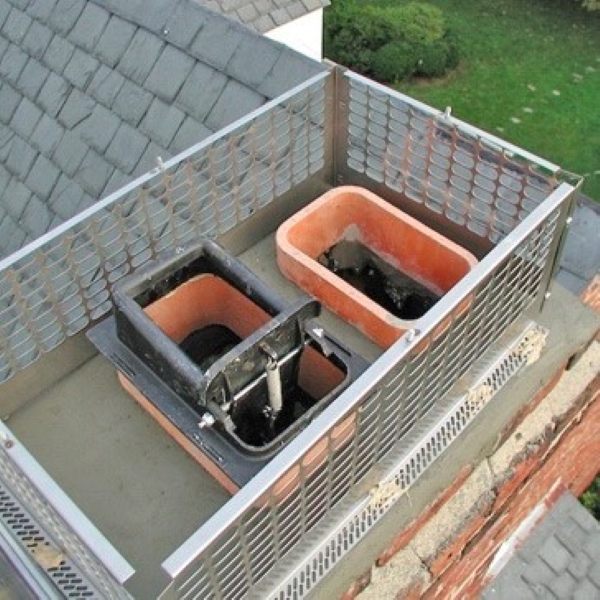Chimney Repairs You Need To Do Right Away
Fireplaces are built to withstand high temperatures and caustic fumes. The chimney is built to stand strong through storms and harsh climates. Overtime, fireplaces and chimneys can deteriorate. Taking care of these five chimney repairs quickly can prevent more expensive repairs in the future.
 #1. Replace a Missing or Damaged Chimney Cap
#1. Replace a Missing or Damaged Chimney Cap
A chimney cap or chaise cover sits over the mouth of the chimney. It acts as an umbrella stopping rain, sleet and snow from falling down the chimney. It also has mesh along the sides that prevent critters and lawn debris from clogging the chimney top. If your chimney cap is missing or damaged, you should have it replaced as soon as possible.
Water can cause severe damage to the inside of your chimney. Critters and lawn debris can obstruct the flue, preventing airflow. Lighting up your fireplace can be dangerous if the chimney is blocked by animal nests or lawn debris. You can avoid all of these problems by investing in a new chimney cap or chaise top if your chimney top is exposed.
#2. Repair Leaks
Chimney leaks are a common problem. There are many ways that water can get into a chimney, such as through a missing chimney cap, unsealed bricks and mortar, cracks in the chimney crown, or damaged flashing. Water can cause extensive damage to the chimney and surrounding walls, ceilings, and beams. If you notice water spots around your chimney or water leaking inside the fireplace, contact a professional chimney technician right away!
Water damage can snowball, especially during a rainy spring. Finding the source of the leak and repairing it as soon as possible can save you hundreds of dollars.
#3. Restore a Cracked or Warped Flue Liner
A flue liner is an important safety feature. It insulates the chimney to improve airflow and protects your home from hot embers and carbon monoxide. If it is damaged, you may have ventilation problems that could increase carbon monoxide poisoning risk. The likelihood of a house fire also increases when there are cracks in the flue liner that could allow hot embers and heat to escape.
A cracked or warped flue liner is such a severe safety risk that it’s not a good idea to use your fireplace until it has been restored.
 #4. Replace a Damaged Damper
#4. Replace a Damaged Damper
The damper is a metal vent that usually sits between the mouth of the fireplace and the chimney. It controls airflow to and from the firebox. When a fire is burning, the damper should be open to allow outside air to fuel the fire and smoke to escape. When your fireplace is out, it should be closed to prevent a draft. If the damper is warped, it should be replaced. It is essential to repair it if it is stuck in the open or closed position.
#5. Repair Damaged Masonry
Cracked and broken masonry creates pathways for water to seep into the chimney. When bricks and mortar absorb water, the moisture inside the masonry can cause severe structural damage over time. Sealing cracks quickly will prevent the damage from spreading. A professional chimney technician will often use tuckpointing to repair broken bricks and crumbling mortar.
Your fireplace and chimney should last a lifetime. Taking care of these minor chimney repairs can prevent major future repairs. A missing chimney cap or leak can cost you thousands of dollars in water damage if it’s not taken care of soon. A broken or warped flue liner or stuck damper can be a serious safety hazard that increases your risk of carbon monoxide poisoning. A few cracks in your bricks and mortar now could spread and weaken the chimney’s structural integrity. If you need any of these chimney repairs, don’t procrastinate! Instead, give us a call!
